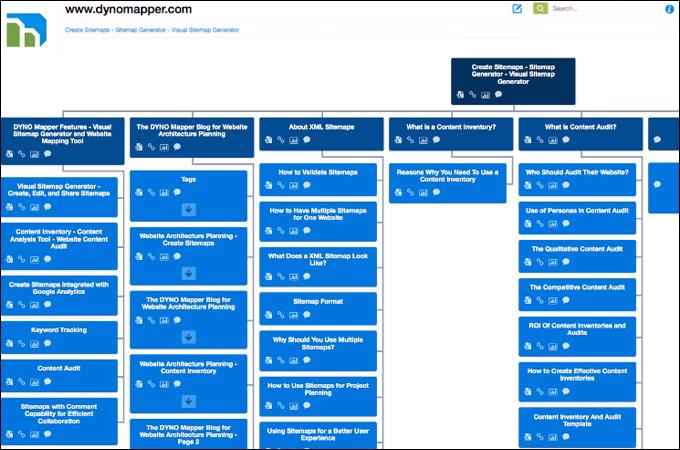Creating a well-structured sitemap is essential for any website looking to enhance its visibility on search engines. But let’s face it, manually crafting a sitemap can be tedious and overwhelming, especially if you’re juggling multiple pages or a complex site structure. That’s where sitemap generator tools come to the rescue! These handy tools can effortlessly create clean, organized sitemaps that not only improve your site’s SEO but also make it easier for users to navigate. Whether you’re a seasoned web developer or a small business owner just starting out, leveraging the right sitemap generator can save you time and frustration. In this article, we’ll explore the 8+ best sitemap generator tools available today—each designed to simplify your sitemap creation process and boost your online presence. So, let’s dive in and find the perfect tool to supercharge your website’s SEO!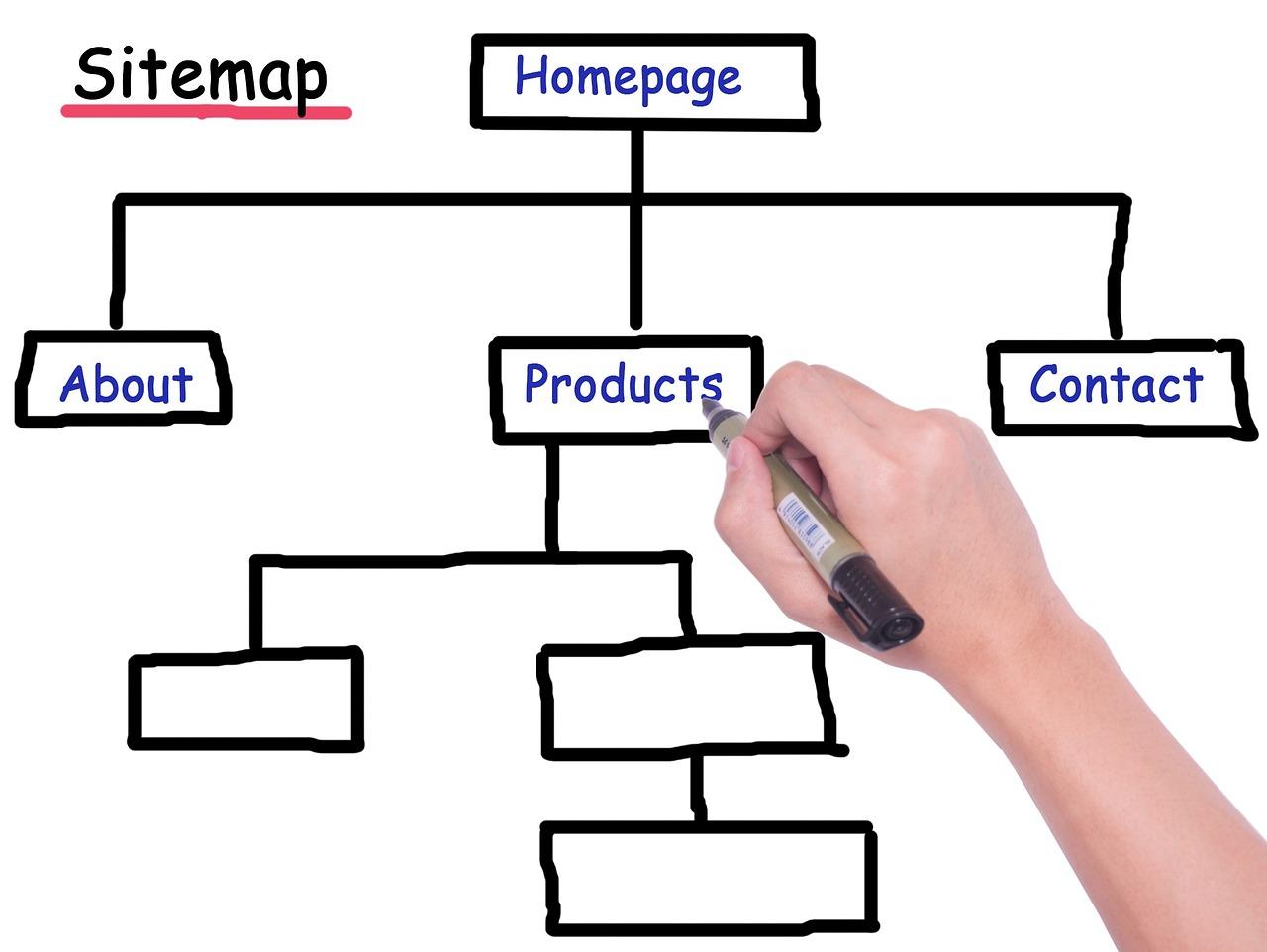
Understanding the Importance of Sitemaps for SEO Success
Sitemaps are crucial for enhancing your website’s visibility in search engine results. They serve as a roadmap for search engines, guiding them through your site’s structure and helping them discover all your important pages. Without a well-structured sitemap, search engines might miss valuable content, negatively impacting your site’s SEO performance.
There are two main types of sitemaps: XML sitemaps, designed specifically for search engines, and HTML sitemaps, which are user-friendly and help visitors navigate your site. Both types play a significant role in SEO, ensuring that your content is indexed efficiently and effectively. A good sitemap can also improve your website’s crawlability, meaning search engine bots can find and index your content more quickly.
Using a sitemap can also provide insights into your website’s structure. This can be invaluable for identifying areas that may require optimization. By analyzing your sitemap, you can determine if there are any orphan pages (pages not linked to from other pages) or if certain sections of your site are underrepresented. This analysis can inform your content strategy, helping you create a more balanced and comprehensive web presence.
Moreover, sitemaps can enhance your site’s loading speed. When search engines understand your site structure better, they can deliver results to users faster, which in turn improves user experience and reduces bounce rates. A well-maintained sitemap ensures that visitors find what they are looking for without frustration, driving engagement and conversions.
the importance of sitemaps extends beyond mere organization. They are vital for achieving SEO success by ensuring effective crawling and indexing, providing valuable insights into your site’s structure, and enhancing the overall user experience. Investing in a quality sitemap is a smart move for anyone serious about improving their online presence.
Key Features to Look for in a Sitemap Generator Tool
When selecting a sitemap generator tool, there are several key features that can significantly enhance your website’s SEO strategy. First and foremost, ease of use should be a top priority. A user-friendly interface allows even those with minimal technical skills to create and manage sitemaps effortlessly. Look for tools that offer intuitive navigation and step-by-step guidance throughout the sitemap creation process.
Another essential feature is the ability to generate XML sitemaps. Search engines primarily use XML sitemaps to discover and index your website’s pages. Ensure that the tool you choose can create XML sitemaps automatically and keep them up to date as you add or remove content from your site. Additionally, real-time updates and automatic crawling can save you valuable time by keeping your sitemap fresh without manual intervention.
Consider the customization options offered by different tools. The ability to include or exclude specific pages, set priority levels, and adjust update frequencies can give you greater control over how your content is presented to search engines. Customization is especially important for large websites with diverse content types, as it allows for a tailored approach to SEO management.
Integrations with other SEO tools and platforms can also enhance functionality. Look for sitemap generators that seamlessly integrate with popular analytics and webmaster tools like Google Search Console or Bing Webmaster Tools. This will help you monitor your site’s performance and troubleshoot any indexing issues more efficiently.
| Feature | Importance |
|---|---|
| User-Friendly Interface | Enables easy navigation for all skill levels |
| XML Sitemap Generation | Essential for search engine indexing |
| Customization Options | Tailors sitemap to your specific needs |
| Integration with SEO Tools | Enhances performance monitoring |
Lastly, consider the support and documentation provided by the tool. A solid support system, including guides, FAQs, and customer service, can make a world of difference, particularly when you encounter challenges. A tool that backs up its features with comprehensive documentation can help you maximize its potential and resolve any queries that arise during usage.
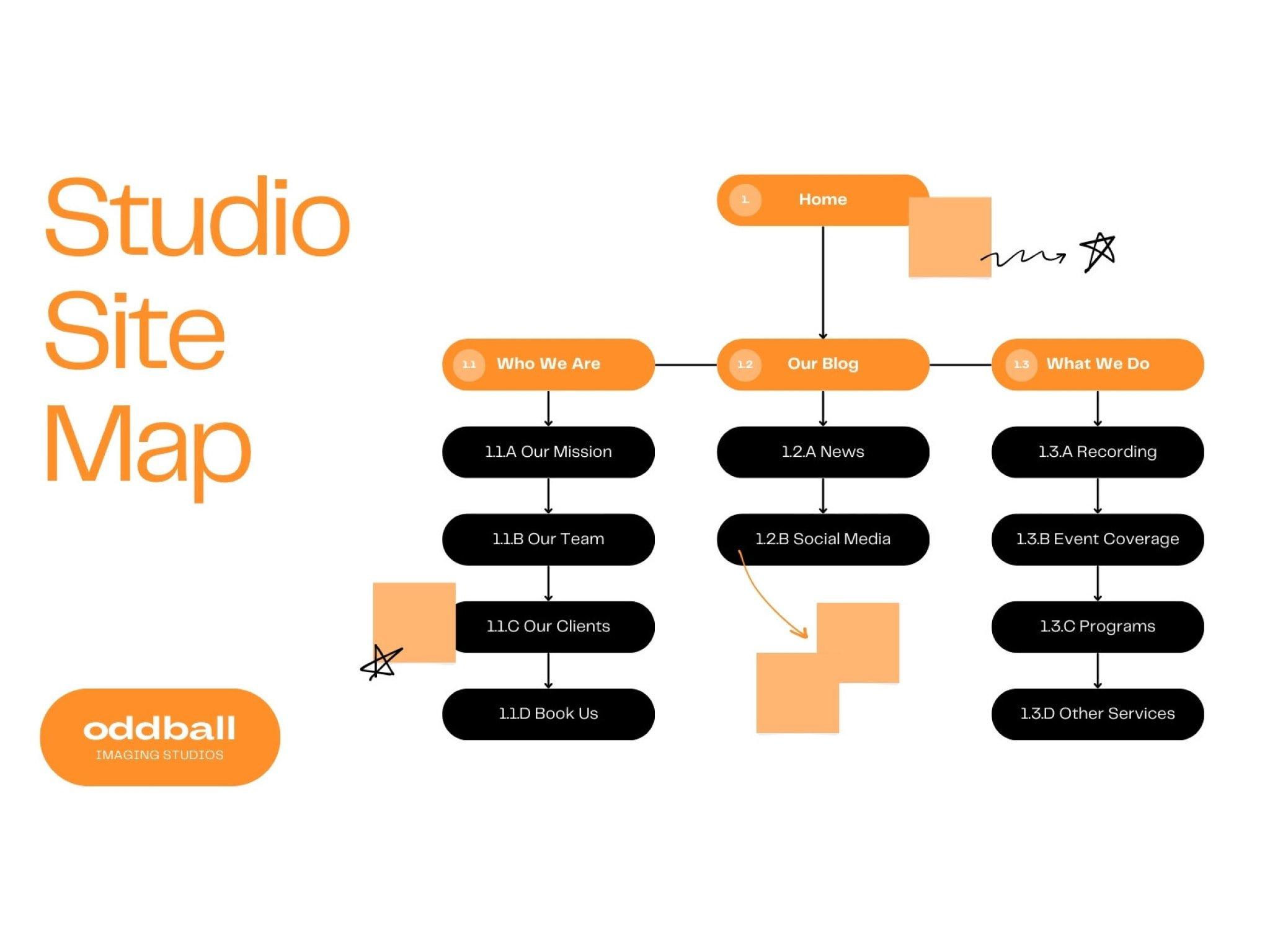
Exploring Top Free Sitemap Generator Tools for Beginners
Creating a sitemap is essential for improving your website’s SEO and ensuring that search engines efficiently crawl your pages. For beginners, a sitemap generator can be a game-changer, simplifying the process of creating and updating sitemaps without the need for technical expertise. Let’s take a closer look at some of the best free sitemap generator tools that are perfect for newcomers.
One of the most user-friendly options available is XML-sitemaps.com. This tool allows users to generate sitemaps in just a few clicks. Simply enter your website URL, and the tool will produce a comprehensive sitemap that you can download in XML format. It’s especially great for those who want a quick solution without getting bogged down in settings.
Another excellent choice is Screaming Frog SEO Spider. While it’s primarily known for its website crawling capabilities, the free version allows you to create a sitemap for sites with up to 500 pages. Its intuitive interface means you can easily navigate and customize your sitemap, ensuring it fits your specific needs.
For users looking for more advanced features without the complexity, Google Search Console offers a built-in sitemap generation tool. By submitting your sitemap directly to Google, you not only verify your ownership of the site but also get valuable insights into how Google interacts with your content. This can be particularly helpful for beginners striving to understand SEO better.
| Tool Name | Features | Best For |
|---|---|---|
| XML-sitemaps.com | Simple UI, XML download | Quick sitemap generation |
| Screaming Frog SEO Spider | Website crawling, customizable | Advanced users |
| Google Search Console | Direct integration, analytics | SEO insights |
| Ahrefs Sitemap Generator | User-friendly, CSV export | Beginner SEO analysis |
Online-Sitemap-Generator.com is another fantastic tool that allows you to create sitemaps for larger websites. This tool is particularly beneficial for users who might not want to download software. It generates a sitemap online and provides an easy download option. The process is straightforward: just enter your website’s URL, and you’re good to go!
Last but not least, GsiteCrawler offers flexibility with its ability to customize your sitemap according to your preferences. It allows for both XML and HTML sitemap generation, catering to a wider range of websites and their needs. This versatility makes it an appealing choice for budding webmasters eager to optimize their site’s visibility.
A Deep Dive into Premium Sitemap Generators for Serious Marketers
When it comes to enhancing your website’s visibility on search engines, utilizing a premium sitemap generator is crucial for serious marketers. These tools not only streamline the process of creating sitemaps but also ensure that your site is optimized for crawlability, which can significantly impact your SEO efforts.
What sets premium sitemap generators apart is their advanced features that cater to the needs of marketers. Here’s what you should look for:
- Customizable options: The ability to tailor your sitemap according to your specific website structure can make a significant difference.
- Support for multiple formats: Whether you need XML, HTML, or plaintext sitemaps, ensure that the tool can generate them all.
- Integration capabilities: A good generator should seamlessly integrate with your existing CMS or website builder, making the process smoother.
- Scheduled updates: Automatic updating ensures that your sitemap reflects the most current state of your website without manual intervention.
Moreover, some premium generators offer additional features such as analytics tracking and submission to search engines. These functionalities can empower marketers to gain insights into how search engines are interacting with their content. For instance, you might find it beneficial to learn which pages are receiving the most attention or which ones may need optimization.
| Features | Tool A | Tool B | Tool C |
|---|---|---|---|
| Customizable Sitemaps | Yes | No | Yes |
| Multi-format Support | Yes | Yes | Yes |
| Integration with CMS | WordPress, Shopify | WordPress | Shopify |
| Analytics Tracking | Yes | No | Yes |
Ultimately, investing in a premium sitemap generator can be a game-changer for your marketing strategy. By ensuring that your website remains easily navigable for search engines, you can drive more traffic and improve user experience. With the right tool, you’ll get not just a sitemap, but a powerful ally in your quest for online visibility.
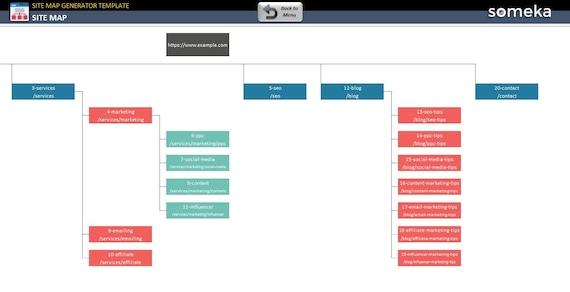
Step-by-Step Guide to Using Sitemap Generators Effectively
Using a sitemap generator can streamline the process of organizing your website’s pages and enhancing your SEO strategy. By following a few simple steps, you can utilize these tools to create effective sitemaps that help search engines crawl and index your site more efficiently.
Choose the Right Tool: Start by selecting a sitemap generator that suits your needs. There are many options available, so consider factors like ease of use, features, and whether it’s free or paid. Popular tools include:
- Google XML Sitemaps
- Yoast SEO for WordPress
- XML-sitemaps.com
- Screaming Frog SEO Spider
- Ahrefs Site Audit
Input Your Website URL: Once you’ve picked a generator, the next step is to input your website’s URL. Most tools will have a dedicated field for this. Make sure you enter the correct URL to ensure accurate sitemap generation. If your website structure is complex, consider adjusting the settings to specify which pages or post types you want to include.
Customize Your Sitemap: Many generators allow you to customize the sitemap’s settings further. You can choose to include or exclude specific pages, set priority levels, and define the update frequency. This customization ensures that the sitemap reflects your website’s content accurately and helps search engines prioritize the most important pages.
Generate and Download Your Sitemap: Once you’ve configured your preferences, click on the generate button. After the process is complete, you will typically have the option to download the sitemap in XML format. Save this file in a location that’s easy to access, as you will need to upload it to your website.
Upload and Submit Your Sitemap: The final step is to upload your newly created sitemap to your website’s root directory. For WordPress users, this can often be done via FTP or through the file manager in your hosting provider’s control panel. After uploading, don’t forget to submit your sitemap to search engines like Google and Bing using their respective webmaster tools. This action will prompt them to crawl your website more effectively.

How to Choose the Right Sitemap Generator for Your Needs
When it comes to selecting a sitemap generator, understanding your specific needs is crucial. Each tool on the market offers unique features tailored for different audiences, whether you’re a small business owner, a blogger, or an enterprise-level website manager. Here are some factors to consider:
- Ease of Use: A user-friendly interface can save you time and frustration. Look for tools that offer intuitive navigation and step-by-step guides.
- Customization Options: Depending on your website’s structure, you might need a generator that allows for greater control over which pages to include or exclude.
- Output Formats: Ensure the generator can create sitemaps in the formats you need, such as XML, HTML, or TXT. Different search engines may prefer different formats.
- Integration Capabilities: If you’re using a content management system (CMS) like WordPress, check if the generator can seamlessly integrate with your platform.
- Frequency of Updates: Choose a tool that offers automatic updates or easy resubmission options, especially if your content changes frequently.
Another important aspect is the level of support offered by the sitemap generator. Having access to customer support can make a huge difference, particularly if you encounter issues or have questions about specific features. Look for tools that provide:
- Comprehensive documentation
- Video tutorials
- Responsive customer service
Additionally, consider the pricing model of the sitemap generator. While many tools offer free versions, they might come with limitations. It’s worth evaluating whether a premium option would provide better value, especially if it includes advanced features like analytics or enhanced customization.
| Tool Name | Key Features | Price |
|---|---|---|
| Tool A | User-friendly, XML support, Auto-update | Free / $10/month |
| Tool B | HTML format, Customizable, CMS integration | Free / $15/month |
| Tool C | Analytics, Multiple formats, Excellent support | $20/month |
take some time to read user reviews and testimonials. Real-world experiences can provide valuable insights into how effective and reliable each sitemap generator is. By carefully considering these factors, you’ll be well-equipped to choose a sitemap generator that not only meets your needs but also enhances your website’s visibility in search engines.
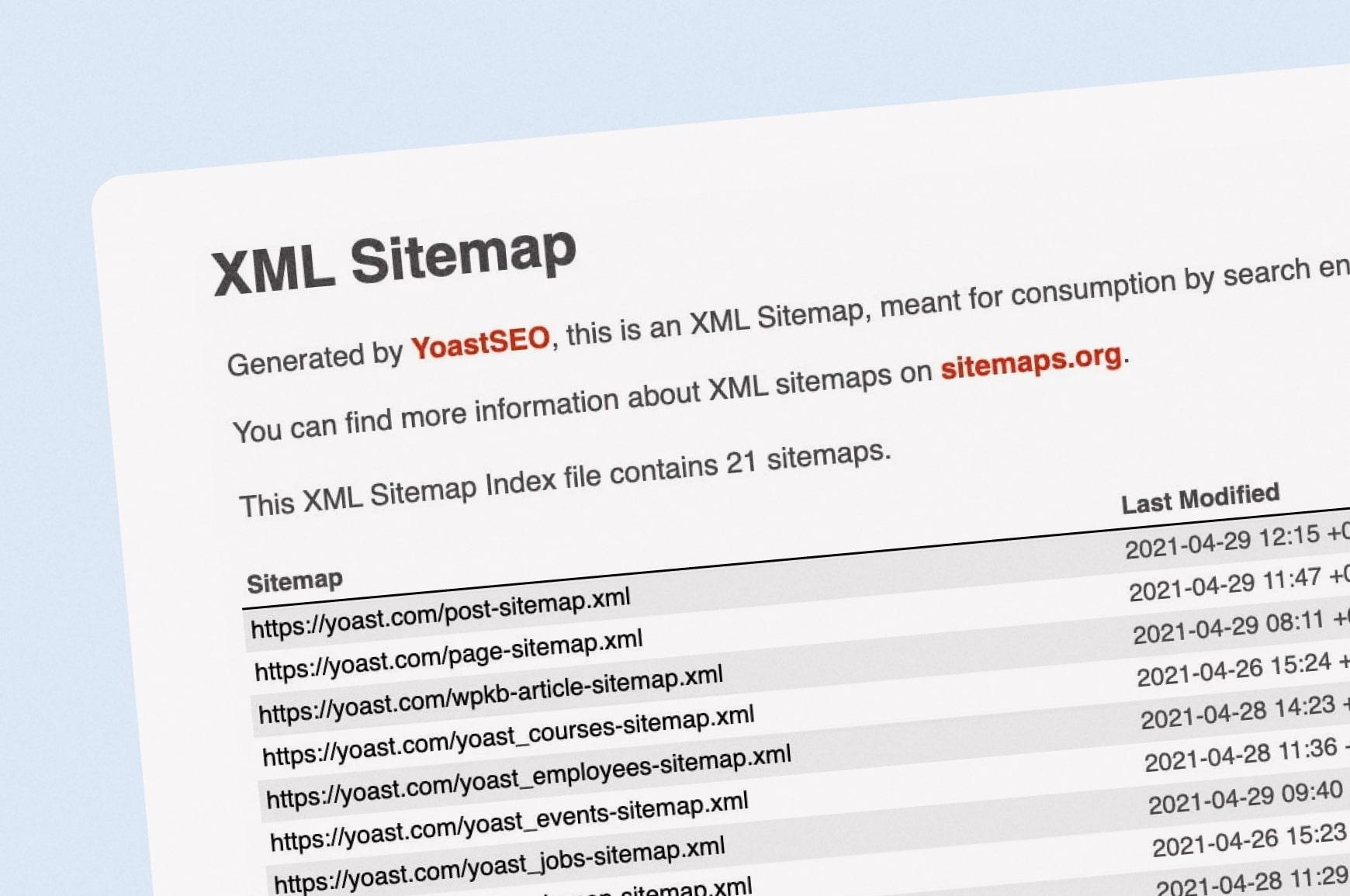
Maximizing Your Websites Potential with XML and HTML Sitemaps
Understanding the significance of sitemaps can dramatically enhance your website’s visibility and user experience. By utilizing both XML and HTML sitemaps, you can ensure that search engines index your site efficiently while also providing a user-friendly navigation path for visitors. An effective sitemap is not just a list; it’s a roadmap that guides both users and crawlers through the rich content you offer.
Benefits of XML Sitemaps:
- Improved Indexing: XML sitemaps help search engines discover new pages quickly, ensuring that your content gets the exposure it deserves.
- Prioritization of Content: You can specify which pages are more important, allowing search engines to focus their crawling efforts accordingly.
- Enhanced Insights: By submitting your XML sitemap to search engines, you gain valuable feedback on any indexing issues, helping you optimize your site further.
The Role of HTML Sitemaps:
- User Navigation: An HTML sitemap acts as a guide for users, making it easier for them to locate specific sections or pages on your site.
- SEO Advantage: By improving user experience, HTML sitemaps can reduce bounce rates and increase dwell time, which are positive signals to search engines.
- Content Discovery: They allow users to discover content they may not have found through traditional navigation, increasing engagement and retention.
To maximize the effectiveness of your sitemaps, consider integrating tools that simplify the process. Here’s a quick comparison table of some top sitemap generator tools that can help you craft these vital components of your site:
| Tool | Type | Features |
|---|---|---|
| Yoast SEO | XML | Automatic generation, priority settings |
| Google XML Sitemaps | XML | Easy setup, frequent updates |
| SEMrush | Both | Comprehensive reporting, SEO insights |
| Screaming Frog | XML | Detailed crawl analysis, customizable settings |
| XML-sitemaps.com | XML | Free online generator, basic settings |
Leveraging these tools not only saves you time but also ensures that your website’s sitemap is optimized for maximum performance. The intricate balance between user experience and search engine visibility is critical, and with the right sitemaps in place, you’re setting your online presence up for long-term success.
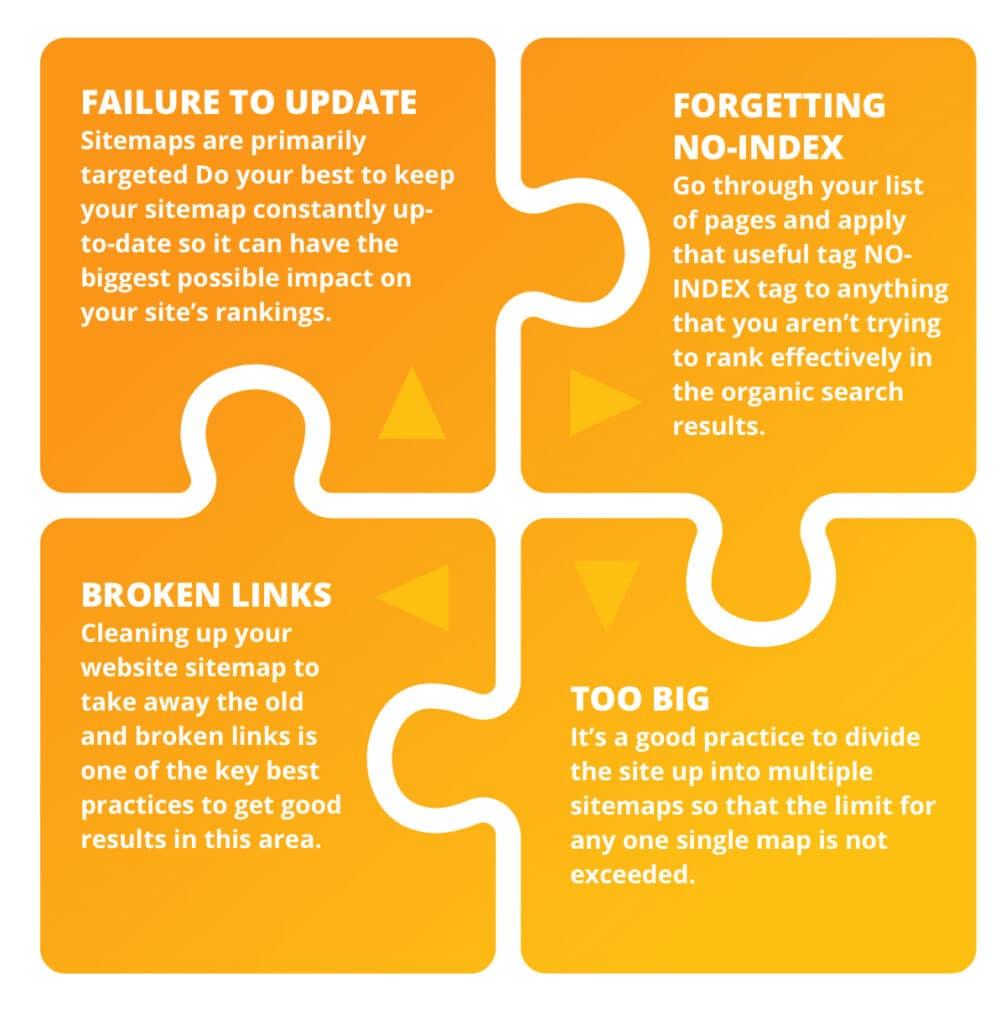
Common Mistakes to Avoid When Creating Sitemaps
Creating a sitemap is a crucial step in optimizing your website for search engines, but there are common pitfalls that can hinder its effectiveness. Avoiding these mistakes will ensure that your sitemap serves its purpose well and helps improve your site’s visibility.
One frequent error is neglecting to include all important pages. Your sitemap should be a comprehensive representation of your website’s structure. Consider the following:
- Prioritize high-value pages: Make sure your homepage, service pages, and blog posts are included.
- Overlooked pages: Don’t forget about pages that may not be directly linked from your navigation but are still valuable.
Another mistake is failing to regularly update the sitemap. Websites are dynamic, and content changes frequently. Here’s why updates are essential:
- New content: Adding new pages without updating your sitemap can cause search engines to miss important information.
- Removed pages: Deleting pages without reflecting these changes in your sitemap can lead to dead links, which hurts user experience.
Additionally, using an incorrect format can also be detrimental. Sitemaps must adhere to specific XML standards. Keep these tips in mind:
- Validate your sitemap: Use online tools to ensure that your sitemap is properly formatted.
- Avoid unnecessary complexity: A simple, clear structure is preferable to a convoluted one that confuses search engines.
don’t underestimate the importance of submitting your sitemap. Even if you create the best sitemap possible, it won’t serve its purpose if search engines don’t know about it. Here’s how to ensure visibility:
- Submit to search engines: Use tools like Google Search Console to submit your sitemap directly.
- Link it in your robots.txt file: This helps search engines find your sitemap more easily.
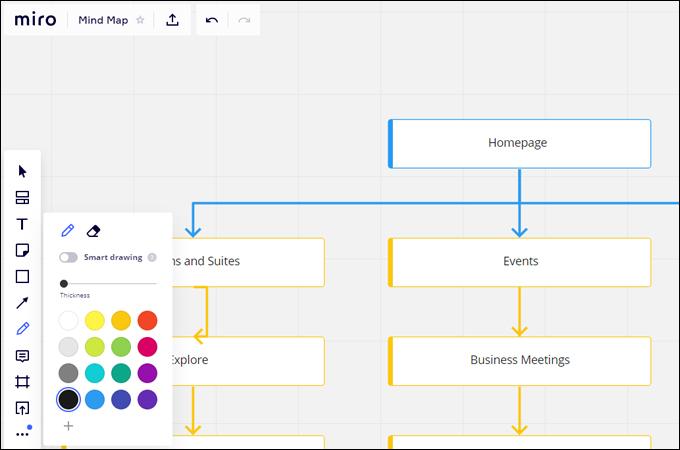
The Future of Sitemap Generation: Trends to Watch
As we look ahead, the landscape of sitemap generation is evolving rapidly, influenced by advancements in technology and changing SEO practices. With the increasing importance of user experience and site accessibility, sitemap generators are becoming more sophisticated, allowing website owners to optimize their online presence like never before. Here are some notable trends to keep an eye on:
- AI-Driven Solutions: Artificial intelligence is beginning to play a significant role in sitemap generation, helping to automate the process of creating and updating sitemaps based on website changes. This not only saves time but also ensures that search engines have the most current information about your site’s structure.
- Integration with SEO Tools: The future of sitemap generators lies in their ability to seamlessly integrate with broader SEO platforms. Expect tools that automatically adjust your sitemaps based on real-time performance metrics, enhancing visibility and engagement.
- Focus on Mobile Optimization: With mobile browsing dominating the internet landscape, sitemap tools are prioritizing mobile-friendly designs. Generators that create responsive sitemaps will be crucial in ensuring that your content is accessible across all devices.
Moreover, as search engines continue to evolve, so too will the functions of sitemap generators. The integration of voice search and AI-driven content discovery means that sitemaps must adapt to these technologies. Tools are likely to emerge that can generate dynamic sitemaps, capable of responding to user queries and preferences in real-time.
| Trend | Description |
|---|---|
| Real-time Updates | Sitemaps that update automatically as changes occur on the website. |
| Enhanced Visuals | Tools that offer visual representations of sitemap structures for better understanding. |
| Increased Customization | More options for tailoring sitemaps to specific business needs and SEO goals. |
In summation, the future of sitemap generation is not just about creating a list of URLs. It’s about developing a strategic tool that aligns with modern SEO practices and enhances user experience. As these trends continue to grow, businesses that adopt advanced sitemap generators will likely see improved performance in search rankings and user engagement.
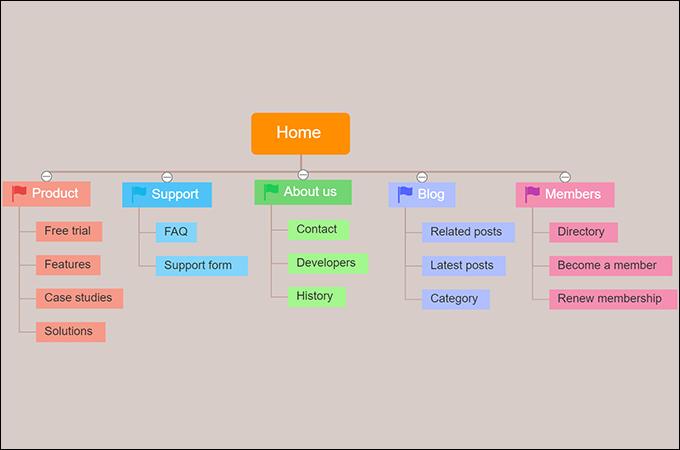
Real User Experiences: Reviews of Popular Sitemap Generators
User Feedback on Sitemap Generators
When diving into the world of sitemap generators, real user experiences can provide invaluable insight. Many webmasters and SEO professionals have shared their thoughts on the tools they’ve tried, highlighting what works and what doesn’t. Here’s a closer look at some popular sitemap generators based on user reviews:
1. Screaming Frog SEO Spider
Users rave about Screaming Frog for its comprehensive crawling capabilities. It’s not just a sitemap generator; it’s a full SEO tool. Many have noted:
- Deep Insights: It digs deep into your website structure, offering insights beyond just sitemaps.
- User-Friendly: The interface is intuitive, making it easy for beginners to navigate.
- Customization: Users appreciate the ability to customize the sitemaps according to their needs.
2. Google XML Sitemaps
This plugin is a favorite among WordPress users for its simplicity and efficiency. Many users have commented:
- Automatic Updates: It automatically updates sitemaps when new content is added.
- Lightweight: Perfect for those who want a hassle-free experience without extra bloat.
- Compatibility: Works seamlessly with various themes and plugins.
3. Yoast SEO
As one of the most popular SEO plugins, Yoast SEO offers an integrated sitemap generator. Users highlight:
- All-in-One: Combines multiple SEO features into one plugin, saving time and resources.
- Enhanced SEO: Helps optimize content while generating sitemaps, making it a valuable tool for content creators.
- Easy Setup: Users appreciate the straightforward setup process—no technical skills required!
4. A1 Sitemap Generator
For those seeking a more advanced option, A1 Sitemap Generator has received positive feedback for its depth of features:
- Flexibility: Users love the flexibility in sitemap formats, supporting XML, HTML, and text sitemaps.
- Scheduling: The ability to schedule regular updates is a game-changer for busy site owners.
- In-Depth Analysis: Many have praised it for the detailed reports generated after crawling.
User Ratings Overview
| Tool | User Rating | Highlights |
|---|---|---|
| Screaming Frog | 4.8/5 | Comprehensive, Customizable |
| Google XML Sitemaps | 4.5/5 | Automatic Updates, Lightweight |
| Yoast SEO | 4.7/5 | All-in-One, Easy Setup |
| A1 Sitemap Generator | 4.6/5 | Flexible Formats, Scheduling |
Frequently Asked Questions (FAQ)
Q: What is a sitemap, and why is it important for my website?
A: Great question! A sitemap is essentially a roadmap of your site, helping search engines like Google understand the structure of your content. It lists all the pages on your website, making it easier for search engines to crawl and index them. Having a well-structured sitemap can improve your site’s SEO performance, leading to better visibility and more organic traffic. If you’re serious about growing your online presence, a sitemap is a must-have!
Q: What is a sitemap generator tool, and how can it help me?
A: A sitemap generator tool automates the process of creating a sitemap for your website. Instead of manually crafting one—a task that can be tedious and time-consuming—these tools scan your site and compile all the necessary information into a structured format. This saves you valuable time and ensures you don’t miss any important pages. Plus, many of these tools offer additional features that can enhance your SEO strategy.
Q: With so many sitemap generator tools available, how do I choose the right one for my needs?
A: Excellent question! When choosing a sitemap generator, consider factors such as ease of use, features offered, pricing, and compatibility with your content management system (CMS). Some tools are perfect for beginners, while others cater to more advanced users with additional features like XML sitemap generation, priority settings, and automatic updates. Think about what you’ll need now and in the future, and pick a tool that can grow with you.
Q: Can I use a sitemap generator even if I have a small website?
A: Absolutely! Whether you have a small blog or a large e-commerce site, a sitemap generator can be beneficial. For smaller websites, it simplifies the process of creating a sitemap and ensures all your pages are indexed by search engines. Don’t underestimate the power of a sitemap—having one can still give you a competitive edge!
Q: Are free sitemap generator tools effective, or should I invest in a paid option?
A: Free tools can be quite effective, especially for basic needs. However, if you’re looking for advanced features, regular updates, or comprehensive support, a paid option might be worth considering. Remember, investing in a quality tool can save you time and ultimately help boost your website’s performance. It’s about finding the right balance for your specific needs!
Q: How frequently should I update my sitemap?
A: Updating your sitemap depends on how often you add or modify content on your website. If you frequently publish new articles, products, or pages, consider setting up your sitemap to update automatically. For less active sites, a quarterly or biannual review to ensure accuracy can suffice. Keeping your sitemap current helps search engines to find and index your new content promptly, enhancing your SEO efforts.
Q: Are there any specific features I should look for in a sitemap generator tool?
A: Definitely! Look for features such as support for XML and HTML sitemaps, the ability to set priorities for different pages, automatic updates, and an easy-to-use interface. Additionally, integration with Google Search Console can be a huge plus as it allows for seamless submission of your sitemap, ensuring that search engines are always in the loop about your latest content.
Q: Can I create a sitemap manually, or is it better to use a tool?
A: While it’s possible to create a sitemap manually, it’s often a labor-intensive process that can lead to oversights. Using a sitemap generator tool is far more efficient and ensures accuracy. Plus, many tools offer features that can optimize your sitemap for SEO, which would be quite challenging to achieve manually. So, unless you enjoy diving into the nitty-gritty, a tool is definitely the way to go!
Q: What are some of the best sitemap generator tools available?
A: Fantastic question! There are some stellar options out there. Some of the top tools include:
- XML-sitemaps.com – Great for quick, basic sitemap generation.
- Screaming Frog SEO Spider – A comprehensive tool with powerful features.
- Google Search Console – Perfect for managing and submitting your sitemap directly to Google.
- Yoast SEO – An excellent choice for WordPress users.
- Ahrefs – Offers more than just sitemap generation and is great for detailed SEO analysis.
Exploring these tools will help you find the perfect fit for your website!
Q: How do I submit my sitemap to search engines?
A: Submitting your sitemap is straightforward! For Google, you’ll want to use the Google Search Console. Simply log in, navigate to the “Sitemaps” section, enter the URL of your sitemap, and hit submit. For Bing and other search engines, the process is similar. Once submitted, they’ll crawl your sitemap regularly to keep their index updated with your latest content. It’s a simple step that can yield significant rewards for your site’s visibility!
Ready to take your website to the next level? Dive into the world of sitemap generators—you’ll be amazed at how simple and effective the process can be!
In Summary
As we wrap up our exploration of the best sitemap generator tools, it’s clear that having the right resources at your fingertips can make a world of difference for your website’s SEO strategy. Whether you’re a seasoned web developer or just starting your online journey, these tools can streamline your site’s organization and ensure search engines can easily navigate your content.
Remember, a well-structured sitemap not only boosts your chances of being indexed but also enhances user experience, guiding visitors seamlessly through your site. So, why wait? Dive into the options we’ve discussed, experiment with a few, and see which aligns best with your needs.
In the fast-paced digital landscape, staying ahead means being proactive. By utilizing a sitemap generator, you’re not just optimizing for today but setting the stage for future growth. Take that step today—your website (and your visitors) will thank you! Happy mapping!

